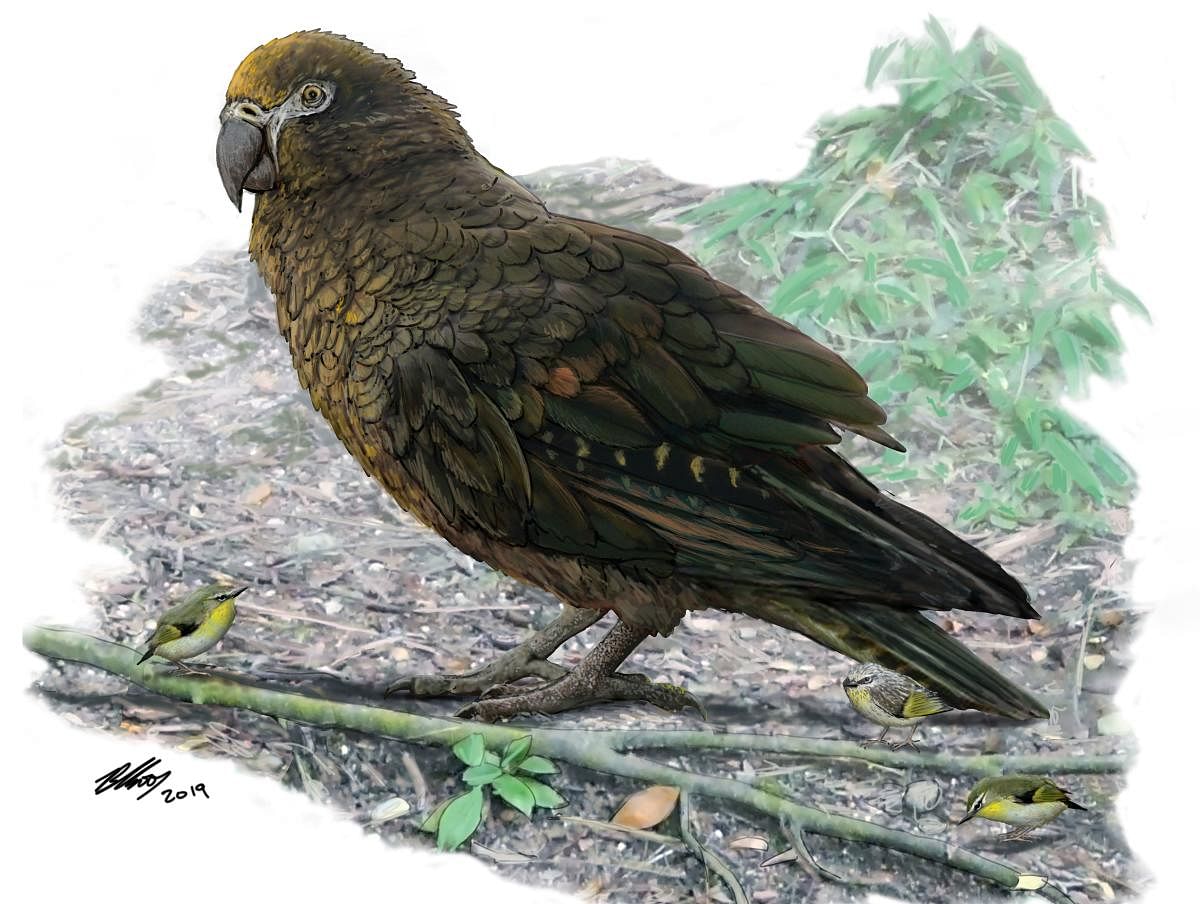
Scientists have discovered fossils of the world's largest parrot, standing up to one metre tall and weighing seven kilogrammes (kg) with a massive beak able to crack most food sources.
The new bird, described in the journal Biology Letters, has been named Heracles inexpectatus to reflect its Herculean myth-like size and strength -- and the unexpected nature of the discovery.
"New Zealand is well known for its giant birds," said Trevor Worthy, Associate Professor at Flinders University in Australia.
"Not only moa dominated avifaunas, but giant geese and adzebills shared the forest floor, while a giant eagle ruled the skies. However, until now, no-one has ever found an extinct giant parrot -- anywhere," Worthy said.
The fossil is about the size of the giant 'dodo' pigeon of the Mascarenes and twice the size of the critically endangered flightless New Zealand kakapo, previously the largest known parrot.
Like the kakapo, it was a member of an ancient New Zealand group of parrots that appear to be more primitive than parrots that thrive today on Australia and other continents, researchers said.
Experts from Flinders University, University of New South Wales is an Australian (UNSW) and Canterbury Museum in New Zealand estimate Heracles to be one metre tall, weighing about seven kg.
The new parrot was found in fossils up to 19 million years old from near St Bathans in Central Otago, New Zealand, in an area well known for a rich assemblage of fossil birds from the Miocene period.
"We have been excavating these fossil deposits for 20 years, and each year reveals new birds and other animals," said Worthy.
"While Heracles is one of the most spectacular birds we have found, no doubt there are many more unexpected species yet to be discovered in this most interesting deposit," he said.
"Heracles, as the largest parrot ever, no doubt with a massive parrot beak that could crack wide open anything it fancied, may well have dined on more than conventional parrot foods, perhaps even other parrots," said Professor Mike Archer, from the UNSW Sydney Palaeontology.
"Its rarity in the deposit is something we might expect if it was feeding higher up in the food chain," he said, adding parrots "in general are very resourceful birds in terms of culinary interests."
"New Zealand keas, for example, have even developed a taste for sheep since these were introduced by European settlers in 1773," Archer said.
Birds have repeatedly evolved giant species on islands.
As well as the dodo, there has been another giant pigeon found on Fiji, a giant stork on Flores, giant ducks in Hawaii, giant megapodes in New Caledonia and Fiji, giant owls and other raptors in the Caribbean.
Heracles lived in a diverse subtropical forest where many species of laurels and palms grew with podocarp trees.
"Undoubtedly, these provided a rich harvest of fruit important in the diet of Heracles and the parrots and pigeons it lived with. But on the forest floor Heracles competed with adzebills and the forerunners of moa," said Professor Suzanne Hand, also from UNSW Sydney.
"The St Bathans fauna provides the only insight into the terrestrial birds and other animals that lived in New Zealand since dinosaurs roamed the land more than 66 million years ago," said Paul Scofield, Senior Curator at Canterbury Museum.